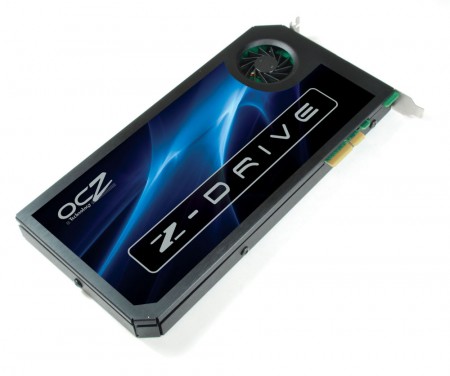OCZ recently introduced, and without actually indicate Vertex with two memory etched into 25 nm. Besides the fact that the process is rather cavalier, this change poses two problems. The first is that the capacity decreases: while qu'OCZ announces 120 GB (114 GiB, so) and models with memory 34 nm have this much capacity, the 25 nm versions offer only 115 GB depending on returns, So about 109 GiB.
This difference would, according to the OCZ forums, a dedicated memory management a bit more aggressive. Another small problem, the speed. If OCZ gives values on data that can be easily compressed (sequences of 0), reaching the limits of SATA 3 Gbit / s, the reality is usually less rosy.
On compressed data, which is usually the case in reality, the 25 nm versions that some people have found in stores are significantly slower. In reading, we would go from 220 MB / s to 180 Mb / s in sequential and 30 to 28 MB / s read files of 4 KB. In writing, a 80GB model is limited to 58 MB / s sequential and 58 MB / s random write 4 KB files here or a model with memory in 34 nm to 145 MBps and 95 MBps .
Obviously, there is a third problem: the life. Cells at 34 nm are given for 5000 write cycles, while memory in 25 nm is only given for 3000 cycles. This is not really a problem in classical usage, but it is a point to make. Hopefully qu'OCZ indicate the type of memory on its upcoming SSD, even if the example of Vertex 30 GB - past 4x nm to 34 nm - tends to suggest that society will not. 


This difference would, according to the OCZ forums, a dedicated memory management a bit more aggressive. Another small problem, the speed. If OCZ gives values on data that can be easily compressed (sequences of 0), reaching the limits of SATA 3 Gbit / s, the reality is usually less rosy.
On compressed data, which is usually the case in reality, the 25 nm versions that some people have found in stores are significantly slower. In reading, we would go from 220 MB / s to 180 Mb / s in sequential and 30 to 28 MB / s read files of 4 KB. In writing, a 80GB model is limited to 58 MB / s sequential and 58 MB / s random write 4 KB files here or a model with memory in 34 nm to 145 MBps and 95 MBps .
Obviously, there is a third problem: the life. Cells at 34 nm are given for 5000 write cycles, while memory in 25 nm is only given for 3000 cycles. This is not really a problem in classical usage, but it is a point to make. Hopefully qu'OCZ indicate the type of memory on its upcoming SSD, even if the example of Vertex 30 GB - past 4x nm to 34 nm - tends to suggest that society will not.



- OCZ leaves memory module market to focus on SSDs (13/01/2011)
- OCZ quits DRAM business to focus on super-speedy SSDs (13/01/2011)
- OCZ exits the DRAM business to focus on the next big thing: SSDs (13/01/2011)
- Plextor M2 Series SSDs pack SATA 6Gb/s interface (08/02/2011)
- Flashy fists fly as OCZ and DDRdrive row over SSD performance (14/01/2011)
No comments:
Post a Comment